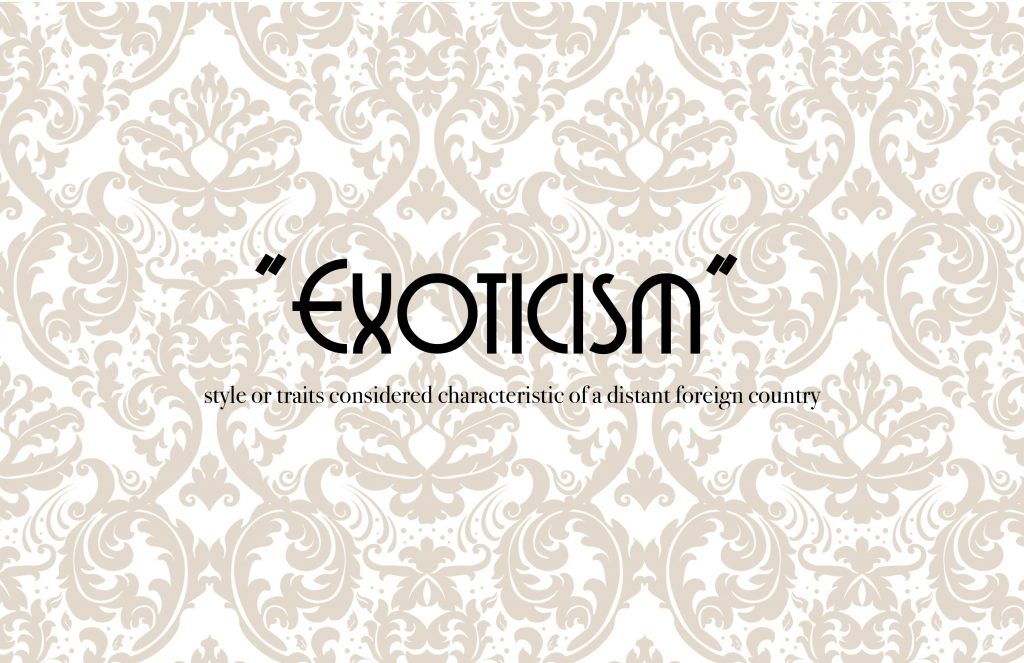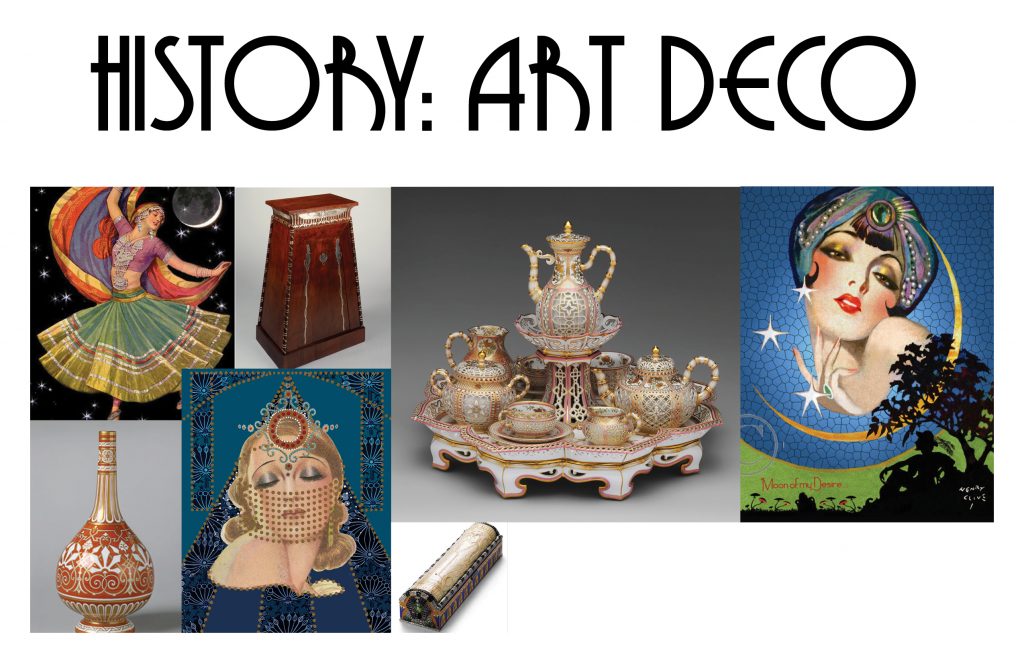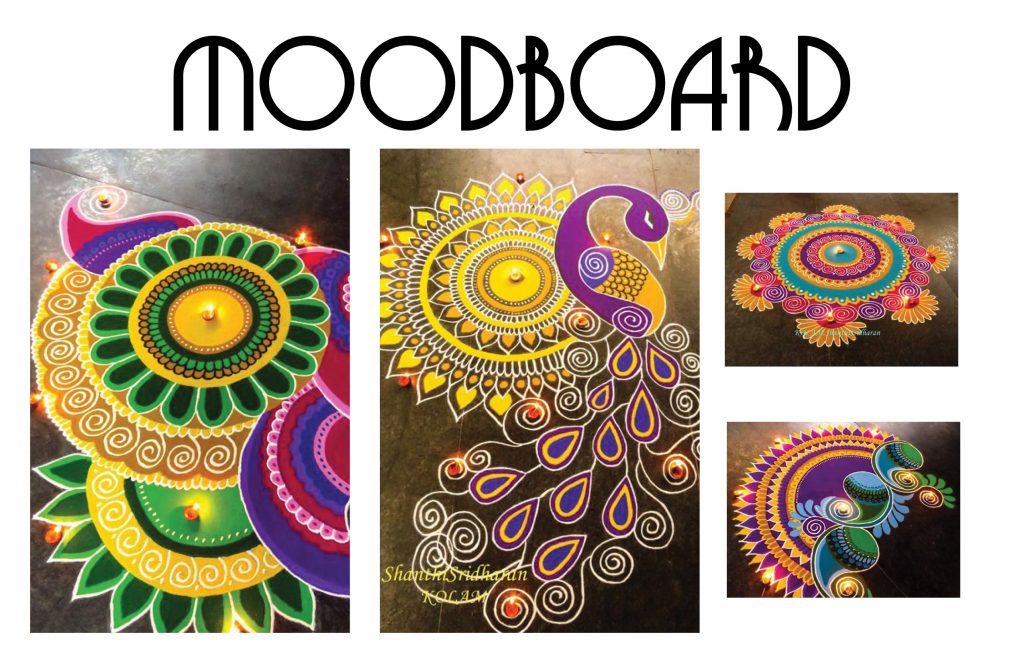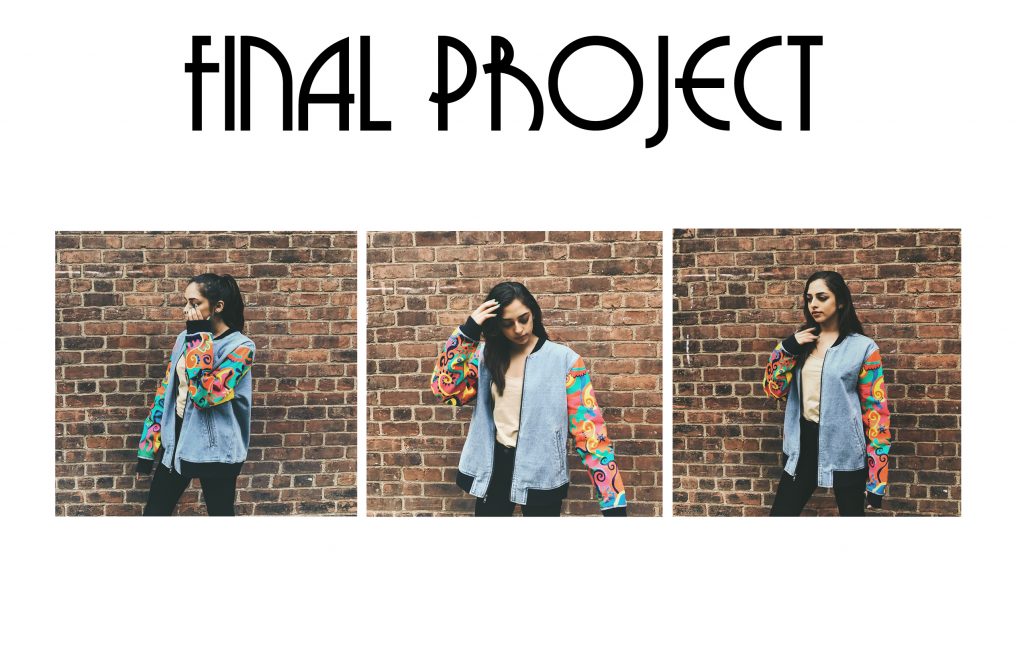Recently an annual famous festival took place in Los Angeles, called Coachella. Infamous for a lot of culturally appropriated “festival wear.” Many outfits are “inspired” by distant foreign countries and cultures, most commonly Native American, Middle-Eastern, Indian, and Southeast Asian. This whole concept when the western world gets “inspiration” from other countries and cultures reminded me a lot about the “exoticism” period in the Art Deco movement. “Exoticism” by definition is style or traits considered characteristic of a distant foreign country. “Cultural appropriation” is when members of a dominant group exploit the culture of a less privileged group of people, usually with little understanding of the history, reasoning, and traditions behind the culture. Both cultural appropriation and exoticism in my opinion devalue the richness of a culture and exploit it for fashion and decoration. During the Art Deco period, we saw objects like a Sarcophagus Vanity Case which has obvious Egyptian influence, and dressing tables and vases inspired by African tribal art. “Exoticism” was stimulated by trade with the East in the 16th and 17th century. England also had imperial control over China, India, Africa and the Pacific. Inspiration was also drawn from Islamic ceramics, Indian textiles and Japanese prints. Everyone was fascinated by these “exotic” cultures and their cultural items had become a “trend.” I chose to transform a standard western item into an art piece inspired by Rangoli designs from Hindu culture. These brightly colored designs are traditionally made on the floor outside the entrance to your house with powders. Rangoli is a form of welcoming guests and different deities into the house. It is also believed that with Rangoli, you are inviting all the gods to visit your home and give the blessings, there are many stories in Hindu mythology in which rangoli is created to welcome Gods like Lord Ram, Goddess Lakshmi, and Lord Krishna. There are many more designs that are drawn by women like a peacock, many free-form images, flowers; religious icons, etc. The main motive of creating Rangoli designs is that it brings good luck. However, these designs are made with no gaps in between, as it believed that an incomplete Rangoli would attract evil spirits. I chose not just any standard item, but oversized denim jackets have definitely been an on-going trend in this type of weather.
A lot of the creators of the Art Deco period designed individually crafted and limited-editions and the jacket I painted is also individually crafted and cannot be mass produced. Art Deco was also known for its decorative style, quite a lot of ornamentation on their items. And thats what I did, I added ornamentation and patterns on this jacket.
As a person of Indian decent, I understand the culture and the meaning behind the traditional Rangoli design, so I feel like I’m allowed to use it as inspiration and even though it is frustrating to see all these culturally appropriated items everywhere, I believe that if one is inspired by art and culture that is not their own which I have to admit can’t be helped, they should be proactive and learn everything about it before using it to benefit superficial aesthetic purposes.




